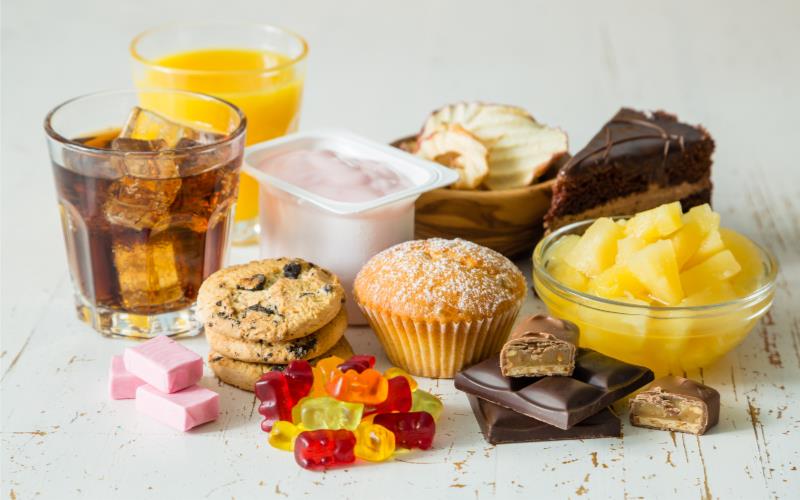Are you aware that children between the ages of 2 to 18 should have less than 25 grams or 6 teaspoons of added sugars daily as per the American Heart Association? Sugary beverages should be limited to no more than 8 oz. per week.
However, are our children following these guidelines? Let’s look at what they really are eating.
Sugary drinks such as a 20-ounce bottle of soda alone can include upwards of 16 teaspoons of added sugar. According to the AHA statement, children under the age of 2 should not consume any foods or beverages with added sugar. However, that is not the case.
All fruit juices, whether apple, orange, grape or a fancy blend are high in sugar. An 8-ounce serving of juice has about 30 grams of sugar on average; that is almost 8 teaspoons.
Most of the breakfast cereals are laden with sugar.
- Honey bunches of Oats – per 100 grams – 20.7 grams of sugar
- Shredded Wheat, lightly frosted – per 100 grams – 22.30 grams of sugar
- Honeycomb Cereal – 100 grams – 31.51 grams of sugar
- Raisin Bran cereal – 100 grams – 32.9 grams of sugar
- Cap’ n crunch’s peanut butter crunch – 100 grams – 33.36 grams of sugar
- Frosted Flakes – 100 grams – 39.27 grams of sugar
Let’s look at some favorite foods of children:
- McDonald’s Mcflurry with Oreo – 1 serving – 21 grams of sugar
- Pop tarts – 2 piece – 24 grams of sugar
- Chocolate chip cookie – 2 piece – 22 grams of sugar
- Chocolate cake with frosting – 1 slice – 40 grams of sugar
- Muffin – 1 piece – 33 grams of sugar
- Timbits – 5 pieces – 35 grams of sugar
- Chocolate glazed donut – 1 piece – 22 grams of sugar
- Chocolate Brownie – 1 piece – 24 grams of sugar
When a child is regularly snacking on refined carbohydrates, sweets, chocolates, fizzy drinks, juices and little or no fibre, protein and monounsaturated and polyunsaturated fats, to slow the glucose absorption, the levels of glucose in their blood will seesaw continually. This may cause fluctuations in their levels of activity, concentration, focus and behavior, and impact on brain function and development.
Dietary studies consistently reveal that hyperactive children eat more sugar than other children. A study of 265 hyperactive children found that more than 3 quarters of them displayed abnormal glucose tolerance i.e. their bodies were less able to handle sugar intake and maintain balanced blood sugar levels.
There is much overlap between ADHD/hyperactivity and autism, so for autistic children who show signs of hyperactivity, improving blood sugar balance is an important consideration.
But keep in mind that not all sugar are created equal. Fruits, whole grains or beans also have sugar. But these are natural sugars. Natural sugars are necessary for a child’s growth and development. The added sugars are the problem.
A recent study support the idea that a breakfast with a lower sugar load may improve short term memory and attention span at school (Physio Behav, 2007; 92:717-24). Giving children a breakfast which contains fiber (oatmeal, shredded wheat, berries, bananas, whole-grain pancakes etc.) instead of loads of refined sugar should keep adrenaline levels more constant and make the school day a more wonderful and productive experience.
Children consume more juice than any other age group, which is problematic if it displaces other nutritious foods. The Canadian Pediatric Society recommends limiting juice and offering water instead. Instead of giving juice to your children, consider giving them the fruit to eat as it has more fiber and cuts down the sugar.
Mary Wu
Registered Nutritional Health Specialist and mom to a 16-year-old autistic boy.
Mary’s knowledge in nutrition has helped her successfully help her son with his short-term memory issues, meltdown, anxiety and digestive issues.

